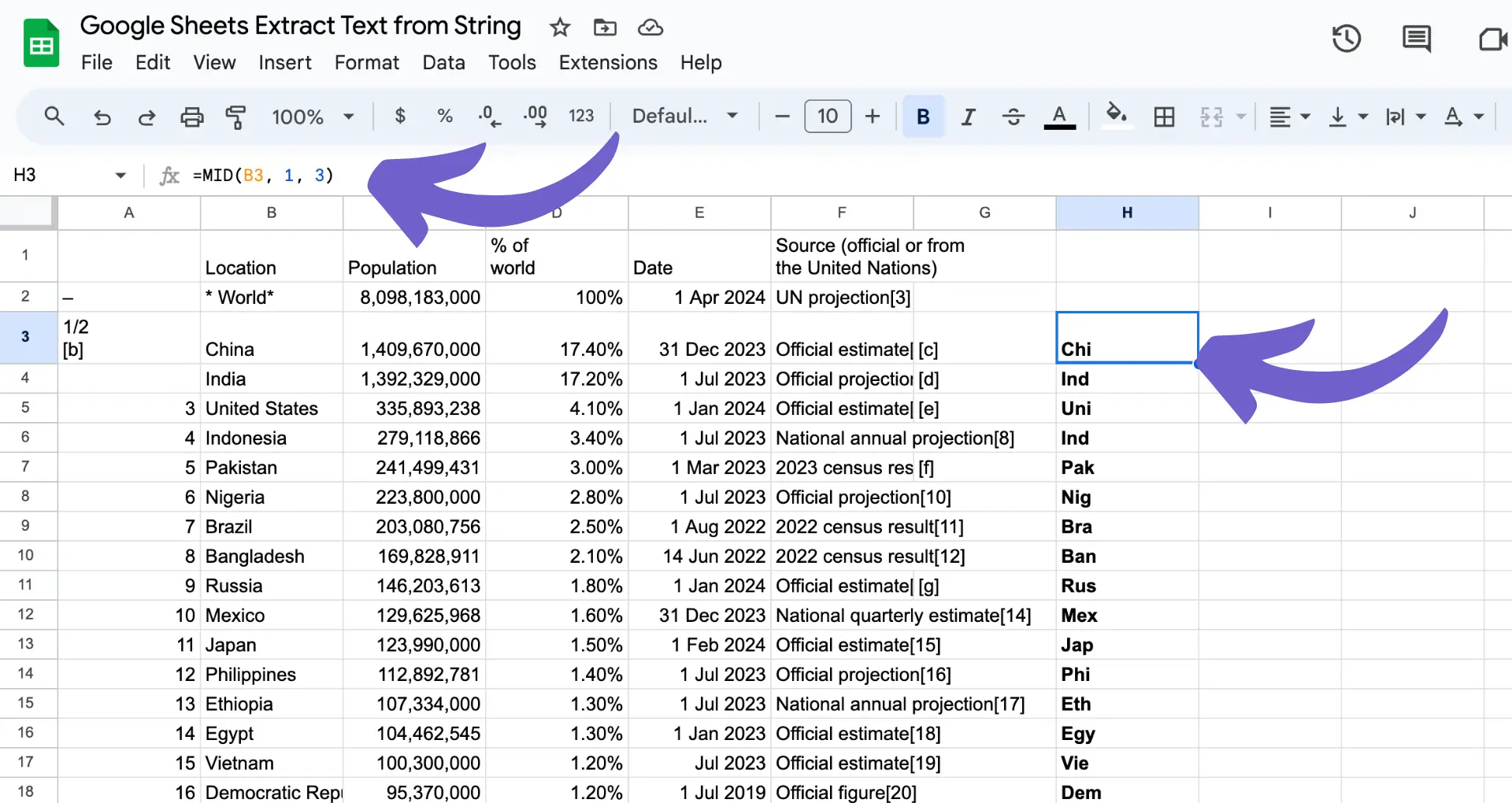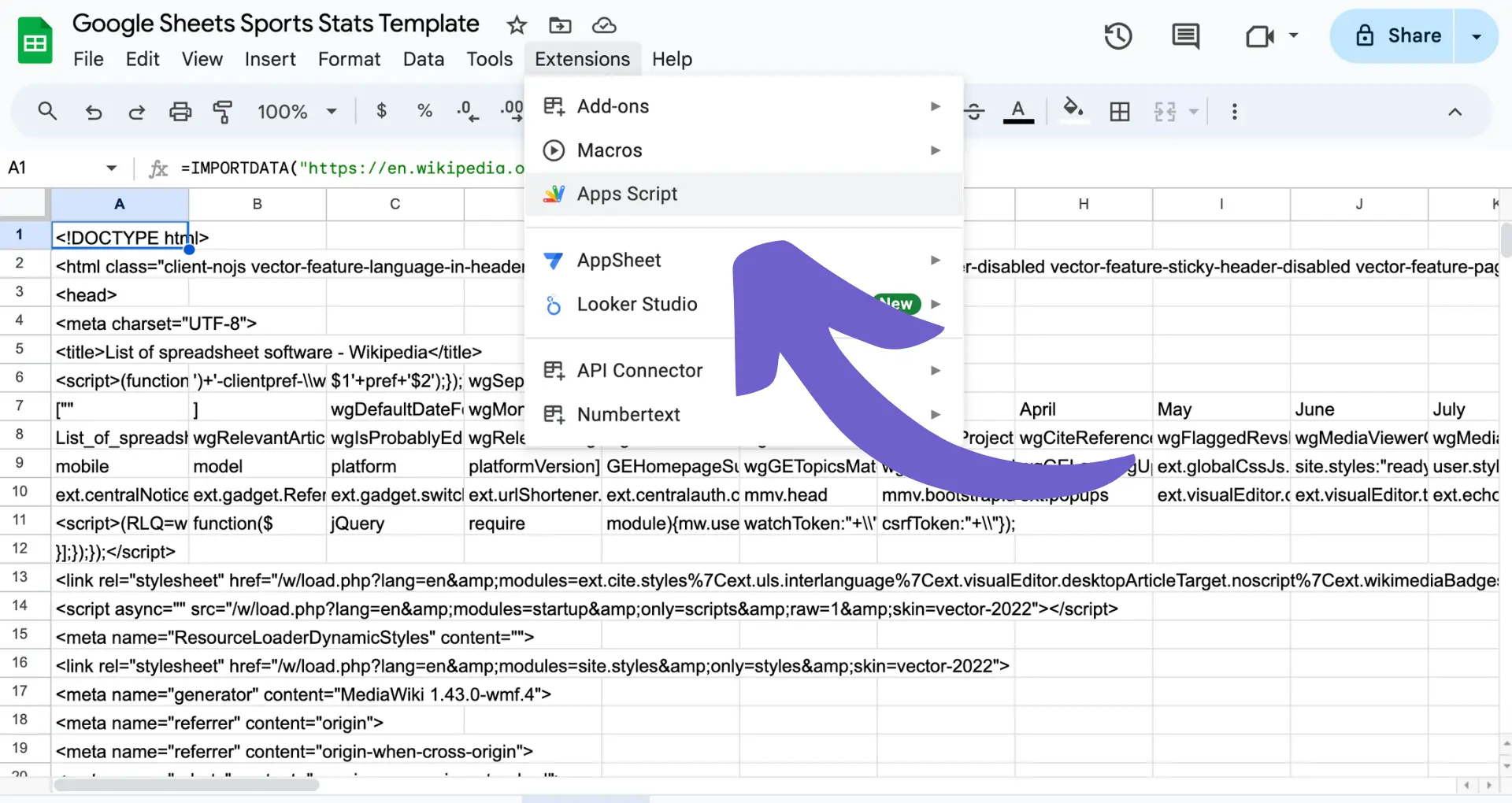Use LEFT, RIGHT, MID, and REGEXEXTRACT to extract text from Google Sheets.
By the way, we're Bardeen, we build a free AI Agent for doing repetitive tasks.
Since you're extracting text, you might love Bardeen's GPT in Spreadsheets feature. It automates text extraction, saving you time and effort.
Extracting text from Google Sheets is a critical skill for effective data management and analysis. In this step-by-step guide, we'll explore how to use the LEFT, RIGHT, MID, and REGEXEXTRACT functions to extract specific portions of text from your spreadsheets. By mastering these functions, you'll be able to efficiently manipulate and analyze your data in Google Sheets.
Introduction to Text Extraction in Google Sheets
Text extraction is a crucial skill for effective data management and analysis in Google Sheets. It allows you to pull out specific portions of text from your spreadsheets, making it easier to work with and analyze your data. In this guide, we'll explore four powerful Google Sheets functions that make text extraction a breeze: LEFT, RIGHT, MID, and REGEXEXTRACT.

- LEFT: Extracts characters from the beginning of a string
- RIGHT: Extracts characters from the end of a string
- MID: Extracts characters from any part of a string
- REGEXEXTRACT: Extracts text based on complex pattern matching using regular expressions
By mastering these functions, you'll be able to efficiently manipulate and analyze text data in your Google Sheets, saving time and effort in your data management tasks. Whether you need to extract specific codes, dates, or any other piece of information from your spreadsheets, these functions will be your go-to tools. For more advanced features, you might consider using a free AI web scraper to automate text extraction.
Using the LEFT and RIGHT Functions for Basic Text Extraction
The LEFT function in Google Sheets allows you to extract a specified number of characters from the beginning of a string. Its syntax is LEFT(string,[number_of_characters]), where string is the text you want to extract from, and [number_of_characters] is an optional parameter specifying the number of characters to extract (default is 1).
For example, if cell A1 contains the text "Hello, world!", the formula LEFT(A1,5) would return "Hello".
Similarly, the RIGHT function extracts characters from the end of a string. Its syntax is RIGHT(string,[number_of_characters]), with the same parameters as LEFT.
Using the same example, RIGHT(A1,6) would return "world!".
These functions are useful for quickly extracting fixed-length portions of text, such as:
- First or last names from full names
- Area codes from phone numbers
- File extensions from file names
By combining LEFT and RIGHT, you can also extract text from both ends of a string, leaving the middle portion intact.
Save time by using Bardeen for web scraping. Automate data collection directly into Google Sheets without coding.
Mastering the MID Function for Flexible Text Extraction
The MID function in Google Sheets allows you to extract a segment of text from any part of a string. Its syntax is MID(string, starting_at, extract_length), where:
stringis the text you want to extract fromstarting_atis the position of the first character to extract (starting from 1)extract_lengthis the number of characters to extract
For example, if cell A1 contains the text "abcdefg", the formula MID(A1, 3, 2) would return "cd".

Here's a step-by-step example of using MID to extract a date from a string:
- Suppose cell A1 contains the text "File_2023-04-15.txt"
- To extract the date portion, use the formula
MID(A1, SEARCH("_",A1)+1, 10) - This searches for the underscore character, adds 1 to start extracting from the next character, and extracts the next 10 characters (the length of the date)
If the end of the string is reached before extracting the specified number of characters, MID will return all characters from the starting position to the end.
By combining MID with other functions like SEARCH and LEN, you can create flexible formulas to extract specific portions of text based on patterns or delimiters. For more advanced text extraction, consider using web scraper extensions.
Advanced Text Extraction with REGEXEXTRACT
Regular expressions (regex) are powerful tools for matching and extracting specific patterns from text. In Google Sheets, the REGEXEXTRACT function allows you to use regex to extract substrings that match a given pattern.
The syntax for REGEXEXTRACT is REGEXEXTRACT(text, regex), where text is the input string and regex is the regular expression pattern to match.
For example, to extract the first sequence of digits from a string in cell A1, you can use:
=REGEXEXTRACT(A1, "\d+")
This will match one or more consecutive digits (\d+) and return the first match found.
You can also use capture groups (parentheses) in your regex to extract multiple substrings. For instance, to extract the username and domain from an email address in cell A1:
=REGEXEXTRACT(A1, "(.*)@(.*)")
This will return the username in the first column and the domain in the second.
Some common use cases for REGEXEXTRACT include:
- Extracting URLs or specific parts of URLs (e.g., domain, path, query parameters)
- Parsing dates or times in various formats
- Extracting product codes, IDs, or other structured data from text
By leveraging the power of regular expressions, REGEXEXTRACT enables you to handle complex text extraction tasks that would be difficult or impossible with simpler functions like LEFT, RIGHT, or MID. Consider using Bardeen's GPT in Spreadsheets to automate and enhance these workflows.

Save time by using Bardeen's GPT in Spreadsheets to automate regular expression searches and handle complex tasks for you.
Tips and Tricks for Efficient Text Manipulation in Google Sheets
To optimize your text extraction processes in Google Sheets, consider these best practices:
- Combine text functions like LEFT, RIGHT, MID, and REGEXEXTRACT to handle complex extraction tasks. For example, use MID to extract a substring, then apply LEFT or RIGHT to further refine the result.
- When working with REGEXEXTRACT, take the time to understand regular expressions and test your patterns thoroughly. Use online regex testers and resources to debug and optimize your expressions for accurate matches.
- Utilize the IFERROR function to handle potential errors gracefully when using text functions. This helps prevent formula errors from disrupting your workflow.
To improve data analysis workflows, consider these tips:
- Use named ranges to create reusable references for your extraction formulas. This makes your formulas more readable and easier to update.
- Leverage Google Sheets' built-in tools like filters, pivot tables, and conditional formatting to quickly analyze and visualize extracted data.
- Automate repetitive extraction tasks with custom functions or Google Apps Script. This can save time and reduce errors when working with large datasets or frequently updating data.

By implementing these best practices and tips, you can streamline your text extraction processes and make the most of Google Sheets' powerful features for efficient data analysis and manipulation.
Boost Your Google Sheets with Bardeen Automations
While Google Sheets offers powerful built-in functions for text extraction, there's always room for automation to streamline repetitive tasks, especially when dealing with large datasets or needing to integrate data from various sources. Bardeen takes this automation to the next level by allowing users to automate not just text extraction but also the integration of this extracted data with other tools and platforms.
Here are some examples of what you can achieve with Bardeen's playbooks:
- Extract Emails from Google Search Results to Google Sheets: Perfect for lead generation, this playbook automates the process of extracting emails from Google search results and saving them directly into a Google Sheet.
- Get text from an image in Google Drive: This playbook extracts text from images stored in Google Drive, ideal for digitizing handwritten notes or scanned documents.
- Copy Google News for a keyword and save results to Google Sheets: Stay updated with the latest news on specific topics by automatically extracting Google News results based on your keywords and saving them to Google Sheets.
These examples only scratch the surface of what's possible with Bardeen. Automating tasks in Google Sheets not only saves time but also opens up new possibilities for data analysis and integration. Get started by downloading the Bardeen app at Bardeen.ai/download






.svg)
.svg)
.svg)
